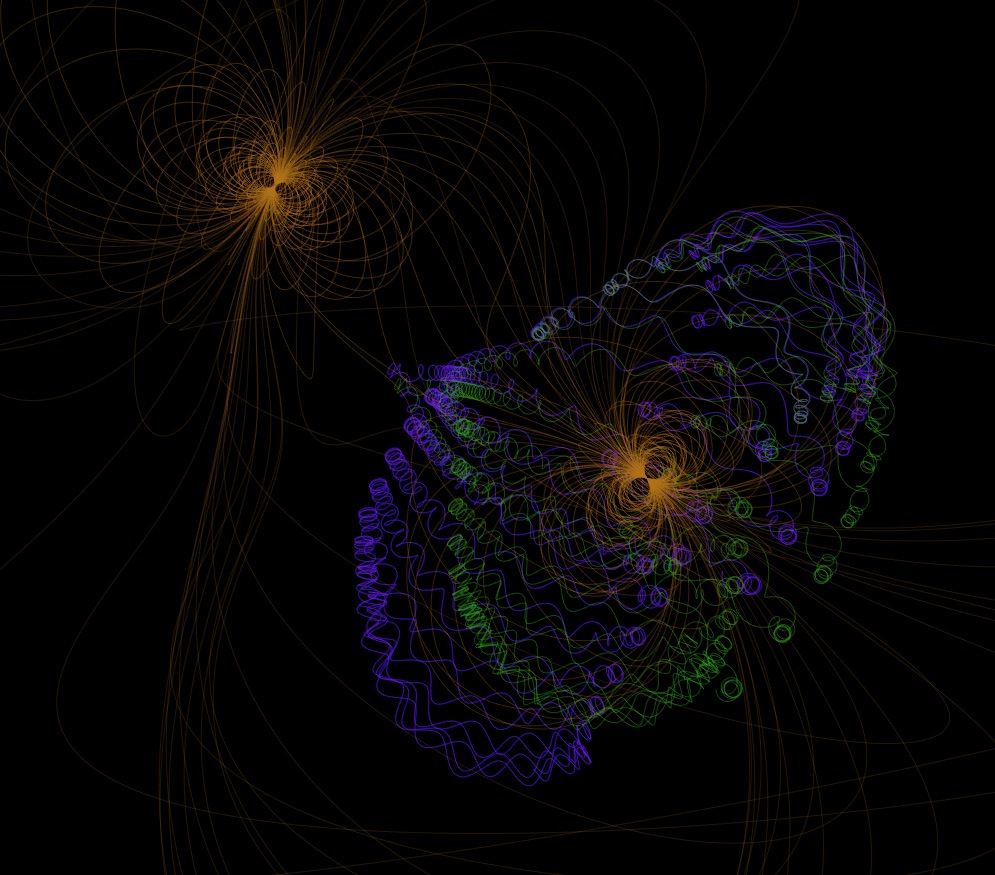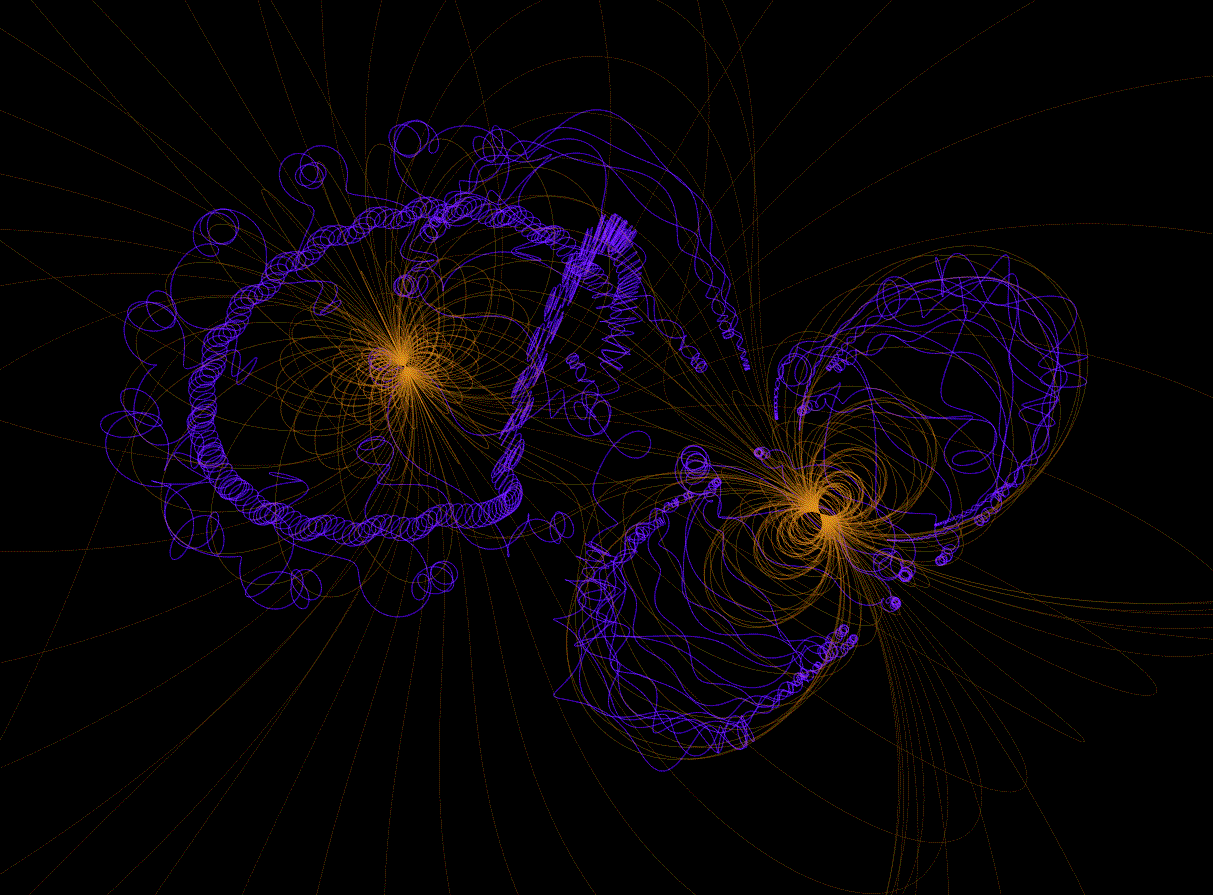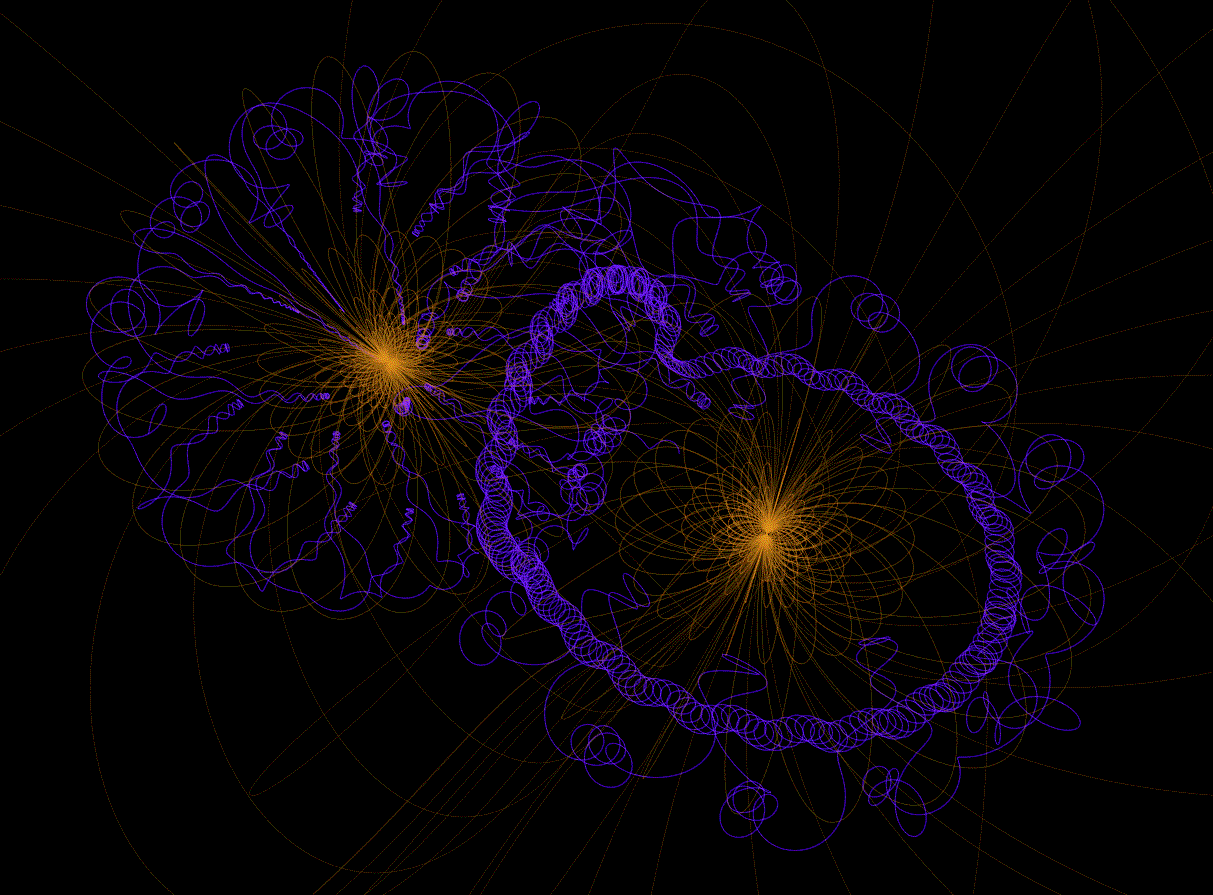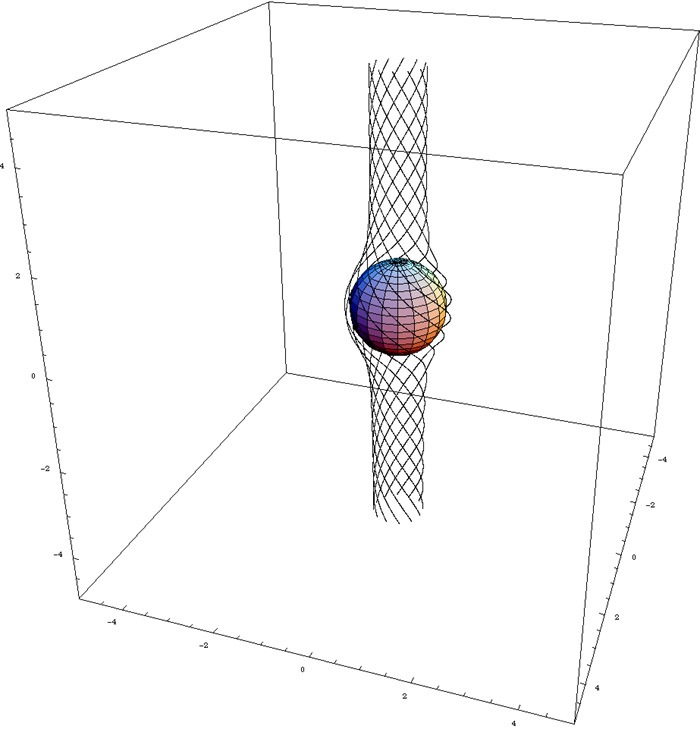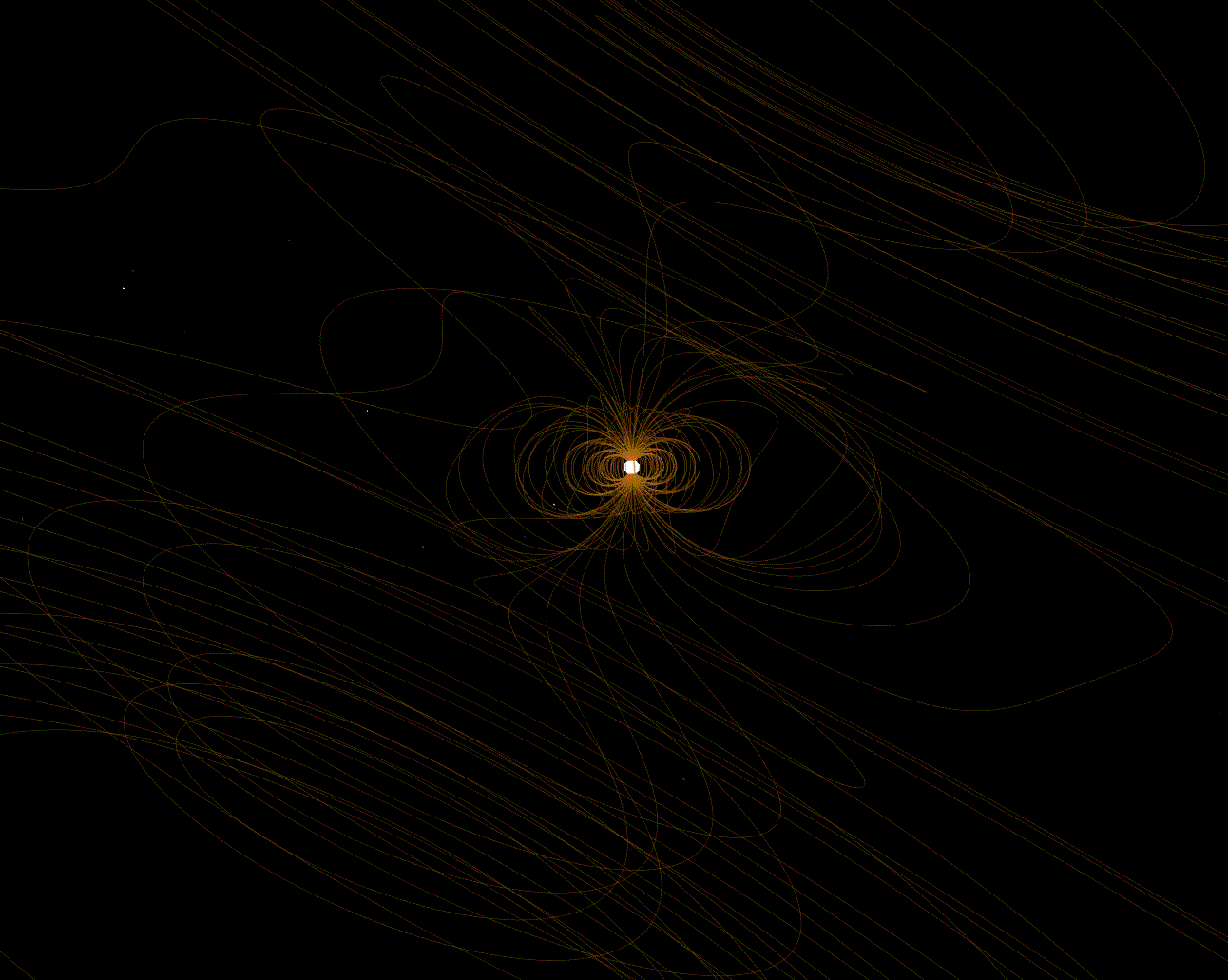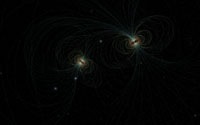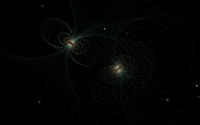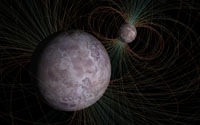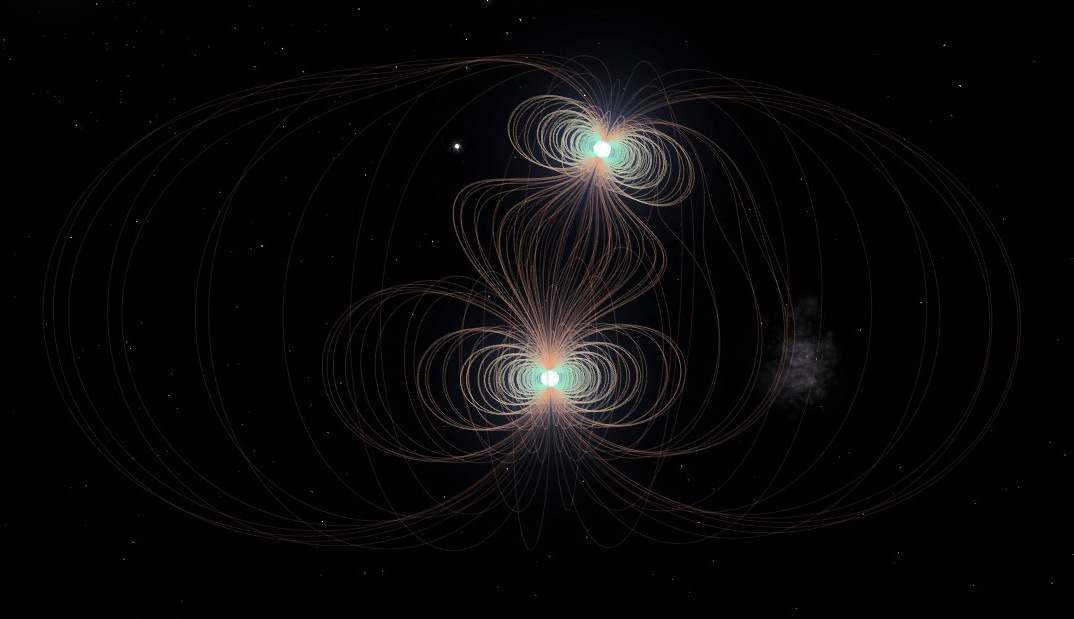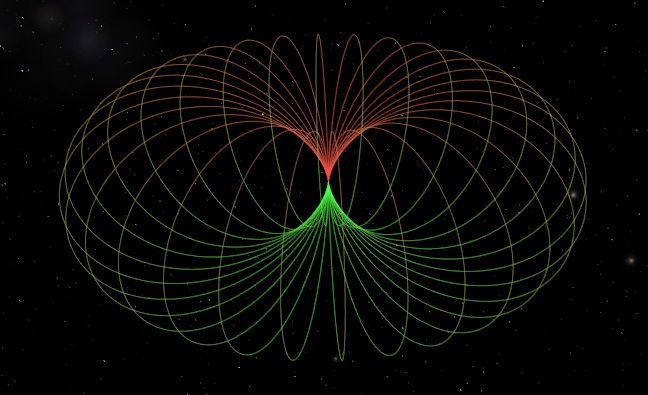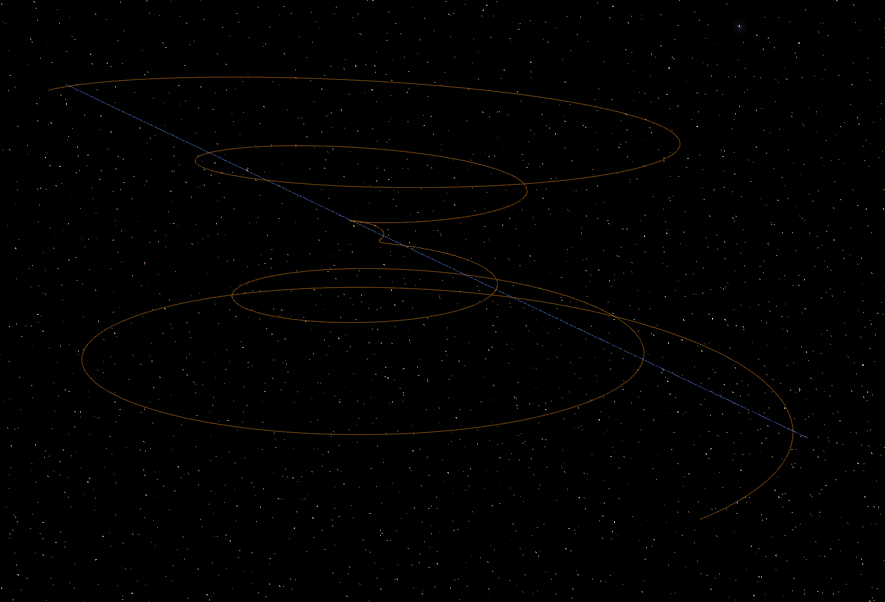
A free particle is moving with a constant velocity along the blue line, as seen by a stationary INERTIAL observer. The same particle as seen by a ROTATING observer is following the *rotating* orange curve. That curve is "sweeping" the blue line and this gives the feeling of a moving particle along the straight line (or the blue line is sweeping the orange curve, which gives the same impression the other way around). I don't know how far I can push this idea, but I think it may be interesting to show the SAME MOTION according to two different observers, especially since there's no question of using an .xyz file to show the particle's motion.
The problem I'm trying to solve is this : my charged particle is moving in the rotating magnetic field of two stars moving around their barycenter. I want to show the particle's path in that field, and I want the path to be visually correlated to the field. The particle's PATH model shown on the previous page were made assuming a static field only (fixed, nonrotating stars). If I solve the path equations for the rotating field, in the stationary inertial frame, I'll get a curve which will be uncorrelated with the moving field : there will be no synchronisation between the static path and the rotating field. If I solve the path equations in the rotating frame (in which the field appears to be stationary), I should get a rotating curve visually correlated with the field, but may be looking weird for the stationary inertial observer (the user in Celestia). Should I show BOTH paths at the same time (same particle, as seen by two observers) ?

